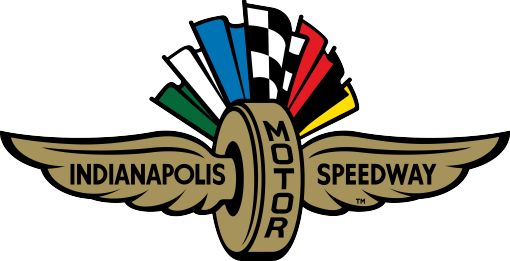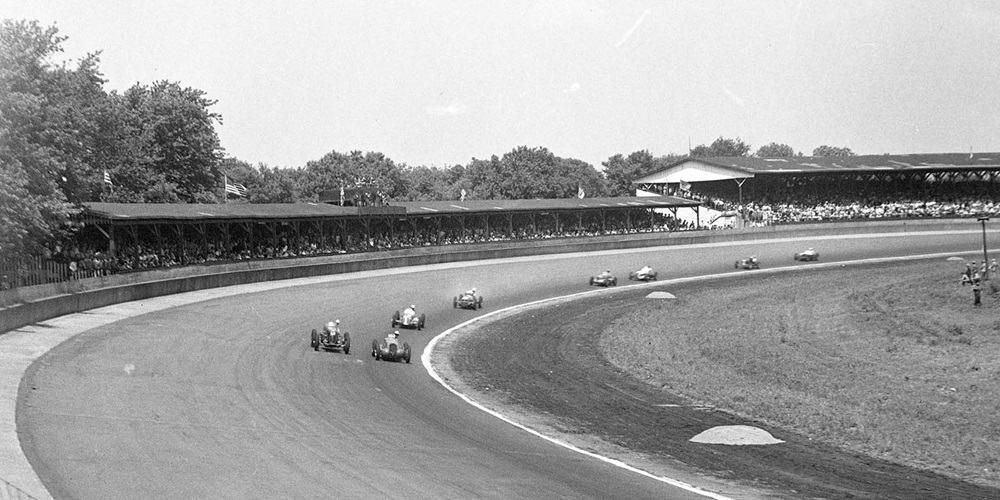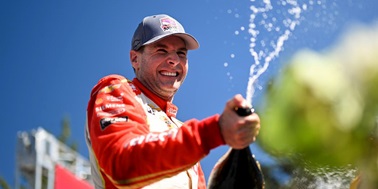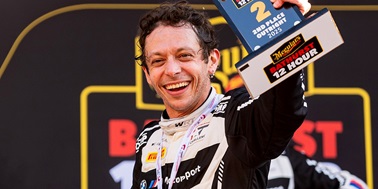1940
In addition to joining Louis Meyer as a three-time winner, Wilbur Shaw became the first person to win the “500” in consecutive years. It was his third triumph in four starts, his only “defeat” during that period having been a second-place finish to Floyd Roberts in 1938.
A light drizzle kept the caution flag out for the final 100 miles, preventing anyone from improving his position. Second and third place finishers Rex Mays and Mauri Rose had shared the front row with Shaw, Mays winning the pole for a record third time and Rose starting from the outside. This was the first and only occasion on which the front-row occupants had gone on to place one–two–three in the race.
Because the race was halted as soon as the leaders completed the distance, Ted Horn, one lap behind in fourth place, was prevented from completing the full 200 laps for what would turn out to be the only time in his nine consecutive starts (1936–41 and 1946–48).
1941
But for a twist of fate, Wilbur Shaw might very well have become the first-ever four-time winner of the “500” as well as the first to win in three consecutive years, the latter feat still not yet accomplished.
He was leading on the 152nd lap when a wheel, which may have been faulty, collapsed, sending him into the first-turn wall. The race was won by Mauri Rose, who had started from the pole in one car, then taken over that of teammate Floyd Davis after his own had failed at 60 laps. Rose moved the Davis car from 12th at 80 laps, to eighth at 100 laps, to fourth by 120.
With Shaw eliminated, Rex Mays making a pit stop and Rose’s other teammate, Cliff Bergere, overcome by fumes and slowing down in a valiant attempt to complete the distance nonstop, Rose moved into the lead for good on the 162nd lap.
An early-morning fire in the garage area delayed the start by a couple of hours in this, the last “500” to be held until 1946, due to America’s involvement in World War II.
1946
After five years of inactivity due to America’s involvement in World War II, and the general acceptance by the locals that the Indianapolis Motor Speedway might be plowed under to make way for a housing development, Terre Haute Indiana, businessman Tony Hulman purchased the dilapidated property and immediately set about trying to get it ready for a 1946 “500.”
Four days before the race, 50-year-old Ralph Hepburn electrified the crowd with a record-shattering run near the end of qualifications, driving a brand-new low-sitting and ear-splitting V8 supercharged beauty called a Novi. He broke the records by almost four miles per hour, raising the single-lap mark to 134.449 mph.
Any concern that interest in the race may have diminished during five years of inactivity was for naught. A massive crowd showed up, causing gigantic traffic jams which became even worse during the afternoon, when people who were attempting to get an early start for home became entangled with those still trying to get in. George Robson was the winner.
1947
Veteran driver but “500” rookie Bill Holland appeared to be cruising to victory, enjoying a half-lap lead over Mauri Rose, his teammate. They were driving brand-new front-drive Blue Crown Spark Plug Specials for former driver Lou Moore, now the acknowledged master of "500" race strategy.
With about 20 laps to go and with a huge advantage over third place, Moore began to hang out pit-board signals reading "EZY," which meant "slow down." Holland responded, but the cagey Rose did not, eventually to catch up with Holland (who thought Rose was merely un-lapping himself) and pass him for the win with seven laps to go.
Widely criticized for failing to signal Holland that Rose was gaining, Moore explained that with considerable personal expense tied up in both cars, he could not afford the risk of a battle between the two, which might well have resulted in either or neither failing to finish. The angry Holland was consoled, remained with the team, and the following year, Rose and Holland would finish one–two again―driving the very same cars.
1948
Mauri Rose joined Louis Meyer and Wilbur Shaw as a three-time winner of the 500 as he and teammate Bill Holland scored their second consecutive one–two finish in Lou Moore’s pair of front-drive Blue Crown Spark Plug specials.
Rex Mays, on the pole for a record fourth time, led at the start and began piling up laps at the head of the pack for the eighth time in 11 starts. Ted Horn, who like Mays would never be able to win the “500” in spite of coming close many times, led 74 laps and ended up fourth after a lengthy pit stop.
Perhaps the biggest disappointment was that suffered by Duke Nalon, who came closer than anyone ever would to winning with one of the Novi supercharged V8’s. He attempted to get by on one pit stop, but the force-feeding of 110 gallons into the Novi’s massive tank at the halfway mark caused so much aeration that the tank appeared to be full when it was not. The level dropped several inches as the bubbles rose to the surface, and Duke had no way to know he was “running light” until the engine began to sputter at 184 laps. In spite of stalling on the unplanned extra stop, he was still able to finish third.
1949
It was a third consecutive victory as well as the fifth in the last eight runnings for driver-turned-owner Lou Moore, who followed up his one–two finishes of 1947 and 1948 with a “one–three.”
Bill Holland, runner-up to Mauri Rose in the previous two runnings, scored this time, mechanical trouble knocking Rose out of second eight laps from the end. Newcomer Johnnie Parsons moved up to claim second ahead of another Moore veteran, George Connor.
A pair of crowd-pleasing V8 Novis started one–two in the hands of Duke Nalon and Rex Mays, but both were out early (Nalon involved in a fiery crash), while Lee Wallard also fell out after leading in the ex–Wilbur Shaw, ex–Ted Horn Maserati.
Not only was the race televised for the first time, but local television was actually born on this day. With barely 3,000 sets ready for the occasion, WFBM Channel 6 (later to become WRTV) made a most ambitious debut by joining the air shortly after breakfast and then presenting live coverage of the entire Indianapolis 500.




